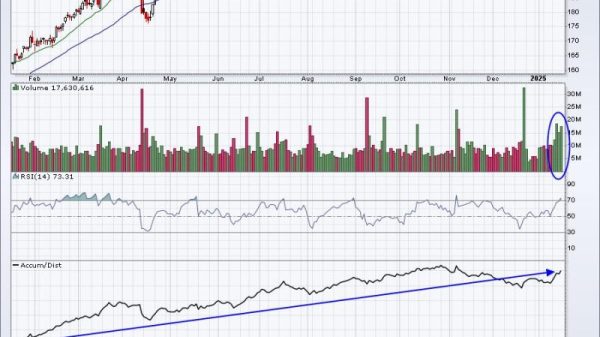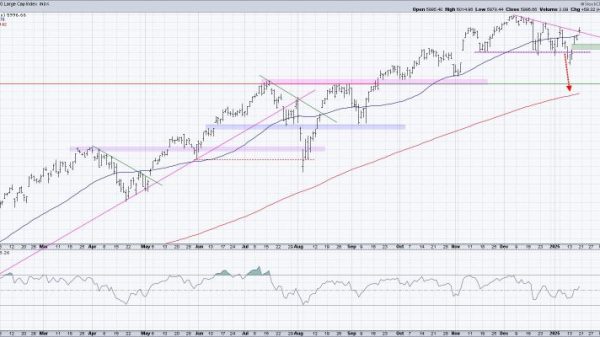The domestic box office is on the rebound, having posted its highest third-quarter ticket sales since the pandemic. The world’s largest movie theater chain, however, isn’t on such solid footing.
AMC operates around 900 theaters and 10,000 screens globally, a larger footprint than its chief rivals Cinemark and Regal. Yet it’s struggled with a hefty debt load, even before the pandemic, that may be preventing the company from fully capitalizing on the theater industry’s revival.
CEO Adam Aron, who took the company’s helm in 2015, spent much of his early days in the job acquiring other chains and outfitting existing theaters with luxury seating. By the time the Covid pandemic shuttered theaters and shut down Hollywood, AMC was already $5 billion in the red.
Four years later, the company still has more than $4 billion in long-term debt on the books. While it has managed to refinance and extend its maturities to 2029 and beyond, interest payments continue to weigh on its bottom line.
“They’ve taken moves to reduce their debt, but they still have a lot of debt and they’re still paying pretty high interest rates on it,” said Eric Wold, analyst at B. Riley.
In the third quarter, AMC’s revenue outpaced its spending, but around $100 million in interest payments pushed the company to a nearly $21 million loss for the period.
“I don’t think it’ll be consistently profitable for a number of years,” said Wold.
In the meantime, AMC is taking strides to improve its revenue and coax lapsed moviegoers back into its theaters, analysts told CNBC. With improved and robust movie slates prepared for 2025 and 2026, the cinema chain has opportunities to leverage improving box office trends — if it can keep an eye on cash flow.
The domestic box office reached $2.71 billion in ticket sales during the third quarter, a little less than a percent higher than the same period last year, according to data from Comscore. The improvement, though small, is impressive considering the same time frame in 2023 featured the blockbuster cultural phenomenon known as “Barbenheimer.”
The dual release of Warner Bros.′ “Barbie” and Universal’s “Oppenheimer” took the box office by storm, generating nearly $250 million domestically on opening weekend. The pair of films went on to secure nearly $1 billion in North America as part of a nearly $2.4 billion global haul.
This year, the third quarter was aided by Disney and Marvel’s “Deadpool & Wolverine,” which tallied $631 million domestically between its July 26 release and September 30, alongside around $360 million from Universal’s “Despicable Me 4,” $267 million from Universal’s “Twisters,” $250 million from Warner Bros.′ “Beetlejuice Beetlejuice” and $183 million from Disney and Pixar’s “Inside Out 2,” which was released in June.
Despite the better-than-expected box office performance, AMC saw a 12% decline in attendance during the period. Cinemark, for comparison, saw just a 2.4% decrease in attendance globally during the quarter.
AMC attributed the decline to a Hollywood film slate that it says didn’t resonate as well in Europe as it did in North America, noting attendance was down 16% in the region. The majority of AMC’s theaters, around 62%, are in the U.S., while Europe accounts for around 37% of its footprint. An additional 1.4% are in Saudi Arabia, according to reports filed in February.
And, it noted, the success of “Barbie” and “Oppenheimer” during the same period a year prior led to more difficult comparisons.
AMC also called out a third-quarter decline in moviegoing in urban centers like New York and Los Angeles, where the company has its largest presence. Wold noted that was likely because the summer film slate was heavily populated with family-friendly films, which typically draw audiences in more suburban areas.
AMC should be in better shape in the fourth quarter as Universal’s “Wicked,” Paramount’s “Gladiator II” and Disney’s “Moana 2” battle for share of premium large format screens during the Thanksgiving holiday. Additionally, Disney’s “Mufasa: The Lion King” arrives in December alongside Sony’s R-rated “Kraven the Hunter” and Paramount’s “Sonic the Hedgehog 3.”
Looking forward, the 2025 slate and 2026 are expected to be even better as Hollywood production, which was disrupted in 2023 by dual labor strikes, returns to its normal churn of releases.
While the third quarter of 2024 saw 31 wide releases — films that opened in or eventually played in over 1,500 locations — higher than the totals in both 2023 and 2019, the number of wide releases for the full year still lags behind pre-pandemic levels.
More than half of next year’s releases are tied to existing movie franchise or to popular intellectual properties, which could lure baked-in fanbases to the theaters, but also likely means they’ll will vie for time in premium large format theaters.
AMC theaters currently house nearly half of all IMAX’s U.S. screens and all of Dolby’s Dolby Cinema-branded U.S. screens. In total it has more than 550 premium large format screens globally.
And the company plans to invest in even more.
“From our patronage data, we know with certainty that moviegoers increasingly seek out our premium large-format screens,” Aron said during AMC’s third-quarter earnings call earlier this month. “On average, our PLF screens in the U.S., for example, do about quadruple the revenues of our non-PLF houses. You all know the saying, ‘Fish where the fish are.’”
As part of what AMC is calling its “Go Plan,” the company is set to invest between $1 billion and $1.5 billion over the next four to seven years to enhance its theaters in the U.S. and Europe. This includes adding more IMAX screens and updating existing ones with new laser projectors, increasing the number of Dolby Cinemas at AMC locations, and updating auditoriums where the screen is at least 40-feet wide to be part of its XL branding and 4K laser projection.
“As [AMC is] approaching 2025, and its really improved release slate, they’re also looking at where to spend money, where to invest in the business and enhance the business wherever they can,” said Alicia Reese, an analyst at Wedbush. “They talked a lot about new investments and upgrading their theaters and expanding their premium screens, adding XL screens. That’s a lot of money, a lot of capex. And I just think they need to approach this in a very balanced way. You know, preserving cash.”
Reese isn’t the only Wall Street analysts suggesting AMC exercise caution as it makes these upgrades.
Eric Handler at Roth Capital Markets noted that the upcoming slate of films will allow the company, which has had to be “very frugal with their cash” in recent years, to make much needed updates, but “they can’t go crazy.”
“They still got to be judicious with their cash flow,” he said.
To raise cash, AMC has traditionally turned to issuing more shares.
The company raised billions during the Covid pandemic by selling new stock, which helped it to pay off its debts and stave off bankruptcy during a time when movie theaters were closed or had limited product to screen to audiences.
However, investors, including AMC’s most stalwart fans, have come to fear dilution and, in the past, have rejected the company’s efforts to issue additional stock. Currently, AMC has around 372 million shares outstanding, according to FactSet.
“They said they would consider using their equity to fund capex projects,” Handler said. “And here we are again. If you’re an equity investor, you may be further diluted down to fund these capex projects. They may issue more shares, and, you know, the number of shares are up like 20 times from pre-pandemic. So, equity shareholders have yet to really reap the benefits of the improvements in the business.”
While AMC’s stock has made some gains in the last month, shares have fallen more than 26% so far this year and are down more than 43% since the same time last year. The stock has fluctuated between $4 and $5 apiece for months.
In the meantime, AMC has been closing underperforming theaters as their leases come up for renegotiation, saving some cash for other ventures.
“They’re trying to shift the footprint so that they maintain their market share gains,” said Reese. “They continue to improve revenue per screen and revenue per attendee with merchandising and popcorn buckets and the like. So, all the metrics are going in the right direction.”
Disclosure: Comcast is the parent company of NBCUniversal and CNBC. NBCUniversal is the distributor of “Wicked.”


































